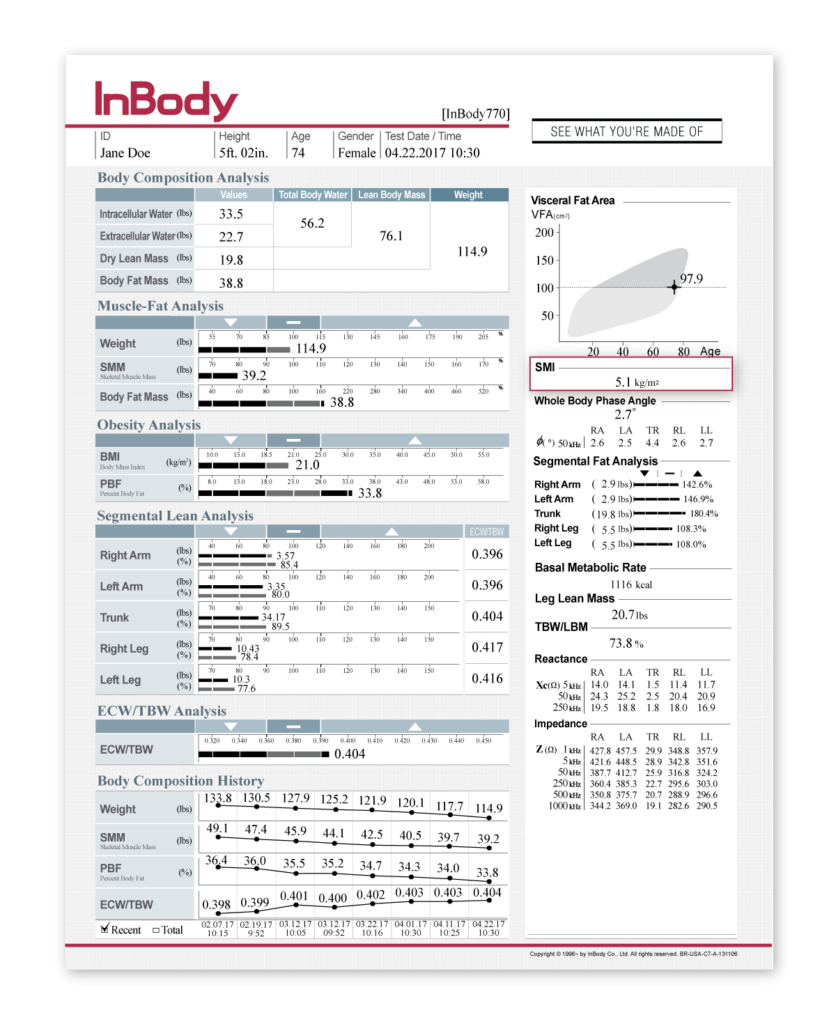

Sarcopenia is an age-related condition and can affect if not taken care off. In simple words muscles have a tendency to grow larger and stronger from birth but as per reports around the time you turn 30 you start to lose muscle mass and function and that is called sarcopenia with aging. Physically inactive people can lose as much as 3% to 5% of their muscle mass every decade, even if you are active, one can still witness some muscle loss which affects strength and mobility leading to frailty and the likelihood of injuries and risks in older adults.

It is a vicious cycle which affects the ability to carry out physical activities. leading to further muscle mass loss and vice versa, affecting the quality of life and expectancy.

It can be greatly improved by assessing right and planning effective exercise and proper nutrition. Maintaining a sedentary lifestyle following diagnosis of sarcopenia can also lead to greater and faster muscle mass loss.

Body composition is essential for understanding muscle, fat and how it affects health and disease risk. Deeper insight into body composition helps in ensuring right treatments and targeting for improvement to reverse or prevent functional impairment, sarcopenia or frailty.

There are many interrelated parameters to assess sarcopenia while checking Body Composition.
Accurately measuring fat-free mass in each segment of the body the Skeletal Muscle Index (SMI) easily identifies muscle mass and frailty risk. Sarcopenia and frailty affect mortality, cognitive function, and quality of life, maintaining lean mass becomes an integral part of ensuring one’s quality of life. SMI is the ratio of the muscle in your arms and legs to your height. SMI can be obtained by dividing Appendicular Muscle Mass with Height(m)2. Using the SMI value (parameter), one can diagnose sarcopenia and monitor nutritional status and frailty risk

Simply going by the weight and its changes cannot monitor disease risk or changes in health status with aging. Sarcopenia reduces the physical activities thus leading to obesity and weight gain among individuals & elderly and this can result in sarcopenic obesity. This cannot be ascertained by weight or BMI. InBody provides accurate measures of body composition, with Muscle-Fat Analysis, Percent Body Fat and Visceral Fat, in order to track the physiological changes from inside out.
In less than 60 seconds, the InBody Test provides easy-to-understand, accurate measurements to evaluate a person’s body composition and determine risk of sarcopenia or frailty. It identifies;

- Identify areas weakened through muscle loss that increase risk of health complications or falls
- Assess muscle mass to determine muscle loss and regain through rehabilitation programs
- Quantify health risk through the evaluation of body fat distribution
- Track fluid imbalances related to loss of muscle mass, edema, or inflammation.
This in-depth analysis provides an edge for identifying health risks and preventing progression to chronic diseases associated with sarcopenia and muscle loss.
Connect with our InBody Specialist now, to know more.


Leave a Reply